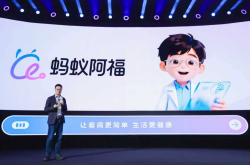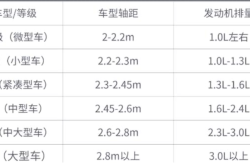From "Han Wang" to Foxconn Industrial Internet: These Firms Are Also Harvesting AI Profits
![]() 09/16 2025
09/16 2025
![]() 526
526
By Yang Jianyong
Large AI models have undoubtedly emerged as the most captivating technological breakthrough of our time. The advent of DeepSeek, with its low cost, open-source architecture, and stellar performance, has spurred widespread adoption across industries. This trend enables more companies to deploy AI applications affordably, propelling AI commercialization and enriching the entire AI ecosystem.
Cambrian
Fueled by AI, Cambrian has witnessed a remarkable surge in operational performance, marked by soaring revenues and a reversal of its long-standing losses. In the first half of 2025, its revenue skyrocketed by 4,347% year-on-year to 2.881 billion yuan, with a net profit of 1.038 billion yuan, compared to a 530 million yuan loss in the same period the previous year, thus achieving a turnaround from loss to profit.
This exceptional performance stems from the robust demand for AI chips driven by large models. Concurrently, restrictions on high-end chip imports in China have accelerated the adoption of domestic alternatives.
As a result, Cambrian has emerged as a sought-after AI chip manufacturer, shining brightly in the capital market. Its stock price once surpassed that of Moutai, earning it the moniker "Han Wang" and a market capitalization exceeding 600 billion yuan. However, the meteoric rise in stock price has also sparked debates over the existence of a bubble.
Foxconn Industrial Internet
Foxconn Industrial Internet has clearly reaped the benefits of the computing power demand spurred by AI large models, demonstrating robust revenue growth and substantial profits. In the first half of 2025, its revenue reached 360.76 billion yuan, up 35.58% year-on-year, while net profit surged to 12.113 billion yuan, a 38.61% increase.
The sustained expansion of capital expenditures on AI infrastructure by global cloud service providers has significantly boosted Foxconn Industrial Internet's cloud computing business, serving as the core engine driving overall performance growth. Computing power services have become the company's largest revenue segment, accounting for over 60% of total revenue, transforming it into the "King of Computing Power" and propelling an astonishing performance in the capital market. Its market capitalization has surpassed the trillion-yuan mark, currently standing at 1.18 trillion yuan, with a cumulative increase of 190% for the year.
SenseTime
SenseTime has also capitalized on the surge in computing power demand driven by generative AI, making generative AI revenue its largest business segment. In the first half of 2025, its total revenue reached 2.358 billion yuan, up 36% year-on-year, with generative AI revenue soaring to 1.815 billion yuan, a 73% increase, accounting for 77% of total revenue. This marks a reversal from its previous sluggish performance, indicating signs of recovery and the potential to initiate a new growth cycle.
This transformation is primarily attributed to SenseTime's extensive AI infrastructure, which has formed a formidable moat around its computing power capabilities. As of August 2025, SenseTime's total computing power reached 25,000 PetaFLOPS, underpinning the rapid development of its generative AI business. Consequently, it has successfully transitioned from traditional AI to generative AI, becoming a representative enterprise in China's generative AI landscape.
CloudWalk Technology
As one of the former "Four Little Dragons," CloudWalk Technology has witnessed a business transformation amid the large model wave, leading to a recovery in its performance. In the first half of 2025, its revenue reached 169 million yuan, up 40% year-on-year.
Notably, under the dual drive of revenue growth and cost control, CloudWalk Technology's losses have narrowed. In the first half of the year, losses stood at 230 million yuan, a reduction of 126 million yuan compared to the same period last year, representing a 35% decrease and indicating a positive performance trend.
Currently, CloudWalk Technology has adopted a core strategy of "AI Agents + Industry Large Models." Its flagship product, the Human-Machine Collaborative Operating System (CWOS), has been upgraded to an AI-Agent platform and is actively promoting the extension of its technology from original fields such as finance and travel to broader industries like manufacturing, energy, and cultural tourism. The "Dongxihu" project, disclosed in the first half of the year, is a typical case combining AI infrastructure and AI agents, with technology development of large models through multimodal techniques.
iFLYTEK
As an AI vendor with over two decades of experience in the artificial intelligence sector, iFLYTEK has been consistently advancing the application of artificial intelligence. It has now established three major AI commercialization systems: AI industry applications, AI open platforms, and AI consumer products. Notably, the commercialization of the Spark large model is gradually accelerating, driving robust performance growth.
After surpassing 20 billion yuan in revenue in 2024, iFLYTEK maintained high growth this year. In the first half of 2025, its revenue reached 10.9 billion yuan, up 17% year-on-year. Among its business segments, smart education, empowered by the large model, stood out with a 23.47% year-on-year increase, reaching 3.531 billion yuan, and its revenue share increasing to 32.36%.
It is worth noting that artificial intelligence is a technology-intensive industry. Due to massive investments in R&D and marketing promotion of large models, iFLYTEK has experienced revenue growth without corresponding profit increases, facing short-term profitability pressures. Despite these challenges, iFLYTEK continues to maintain strategic investments to seize the future dividends of artificial intelligence.
To this end, iFLYTEK has even announced a private placement plan worth 4 billion yuan, with 800 million yuan allocated to the Spark Education Large Model and typical product development projects, upgrading the Spark Education Large Model to strengthen its competitive advantage in the education market. The remaining 3.2 billion yuan will be used for supplementary working capital. As continuous investments in the artificial intelligence field increase, they will promote the commercialization of large models in more industries, and iFLYTEK's business scale is expected to further expand. The company pointed out that the demand for daily operating funds will also increase accordingly.
Kingdee
As a representative SaaS service provider in domestic enterprise management services, Kingdee has seamlessly integrated AI into its SaaS products, linking ERP data and forming a unique technological barrier. Simultaneously, it has deeply integrated AI into the underlying architecture of its SaaS products, building a technological foundation centered around the Cosmic AI Agent platform.
Due to the continuous advancement of AI applications, Kingdee's performance has shown steady growth. In the first half of 2025, its revenue reached 3.192 billion yuan, up approximately 11.2% year-on-year, with cloud service revenue reaching 2.673 billion yuan, an 11.9% increase, and cloud subscription revenue reaching 1.684 billion yuan, a 22.1% increase.
Meanwhile, Kingdee disclosed its AI contract amount for the first time. During the reporting period, the total contracted amount of AI contracts exceeded 150 million yuan. Looking ahead, management hopes that the proportion of AI revenue in the company's total revenue will reach 30% by 2030.
Overall, Kingdee is actively leading with an "AI-First" approach, continuously integrating AI technology deeply into all its SaaS products, services, and operational processes. While reconstructing enterprise management with AI, it is driving steady growth in overall revenue and improving gross margins. In response, management expressed confidence in achieving profitability goals this year during the latest earnings briefing, expecting to turn from loss to profit for the entire year of 2025.
Finally
Since OpenAI launched ChatGPT in November 2022, it has propelled the development of artificial intelligence to new heights, ushering in the era of generative AI. Various sectors are seizing this opportunity and rapidly integrating large model services, thereby initiating a new growth cycle in the artificial intelligence market.
Generative AI technology will be integrated into more products, leading to a compound annual growth rate of 29% in global artificial intelligence spending from 2024 to 2028. By 2028, global spending on artificial intelligence is expected to reach 632 billion US dollars, according to an IDC report. The broad prospects of the artificial intelligence track benefit companies across the entire AI ecosystem, positively impacting their performance.
Yang Jianyong, a Forbes China contributor, expresses views solely on behalf of himself. He is dedicated to in-depth interpretations of cutting-edge technologies such as artificial intelligence, AI large models, the Internet of Things, cloud services, and smart homes.






